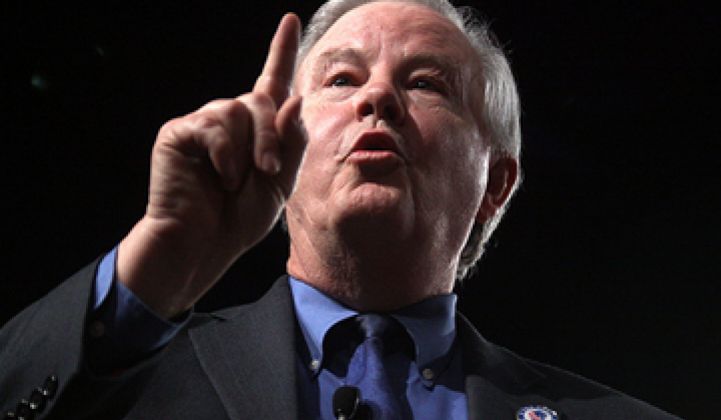A Republican effort to repeal light bulb efficiency standards failed in Congress today, but you can count on the debate continuing.
The final vote on the Better Use of Light Bulb (BULB) Act came to 233 in favor and 193 against. Thus, it won a majority, but it was brought to the floor in a manner that would have required a two-thirds majority to pass. Thus, the bill failed.
The BULB provision sought to reverse light bulb efficiency standards contained in the Energy Independence and Security Act of 2007. The law -- passed by former President George Bush -- effectively forces manufacturers to phase out conventional 100-watt incandescent bulbs in 2012 and eliminate conventional 75- and 60-watt incandescents by 2014. LED bulbs and compact fluorescents would begin to take their place. Although some manufacturers continue to tinker with efficient incandescents, the regulations pave the way for LED bulbs, which use about one-tenth of the power.
Incandescent bulbs are incredibly inefficient. Only around five percent of the power injected into them gets converted into light; the other 95 percent becomes heat. That is why Easy Bake Ovens and lizard terrariums come with incandescent bulbs. Many other countries -- Australia, Canada, the EU -- have passed similar legislation. Many manufacturers, including those that have already shut down incandescent factories and invested in LEDs, support the regulations and opposed BULB.
Sponsor Joe Barton (R-Texas) and others object to the regulations on various grounds. Barton, for one, calls CFLs "the little, squiggly, pig-tailed" bulbs. Representative Michelle Bachmann said that the law is an example of bureaucratic overreach by President Obama, conveniently ignoring the fact that Bush, a Republican, actually passed it.
Rep. Fred Upton (R-Mich.) also supported BULB, despite being one of the sponsors of The Energy Independence and Security Act in 2007.
Some consumers have objected to the regulations on the grounds that 1) incandescents are cheap and 2) the light quality is fairly good. These are valid concerns. Nonetheless, LED technology is taking care of both problems. Toward the end of the year, a number of 60-watt equivalent LEDs will be on the market that sell for around $20. Yes, that's $19 more than the average $1 incandescent, but LED bulbs can cut power bills by around $10 a year and will last a decade or longer. Thus, consumers will save in the long run. Color and light quality have also drastically improved.
Despite the failure of BULB, the news may -- weirdly -- give Barton exactly what he wanted in the first place. Namely, a way not to fiddle with national policy while stoking lots of residual anger. The Act is defeated. Thus, he doesn't have to take the hit for reversing a law and setting back U.S. energy policy. Defeat also means Republicans in the Senate won't have to weigh in on the bill.
At the same time, he can claim the will of the people was thwarted. BULB won a majority of the votes, after all. A symbolic defeat perhaps was the ultimate intent of introducing the bill in a way that required an impossible-to-achieve two-thirds majority.



